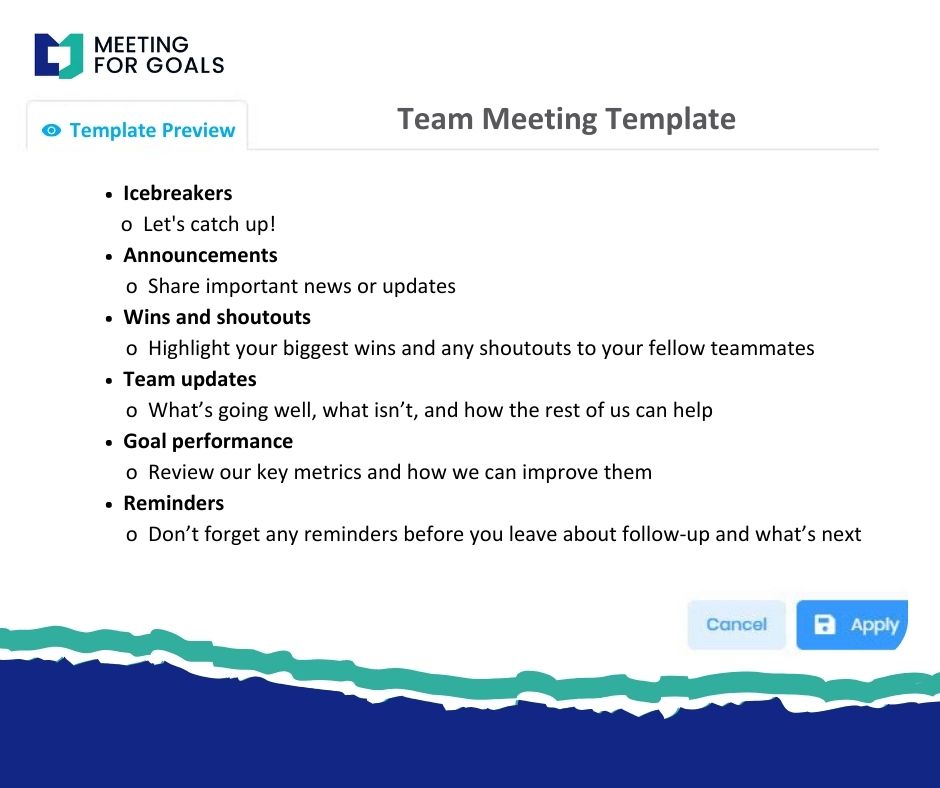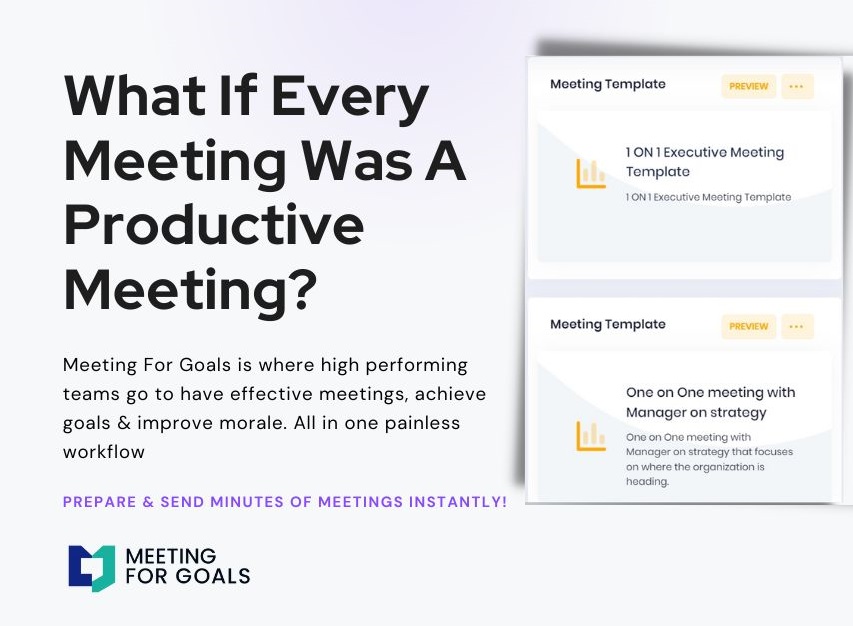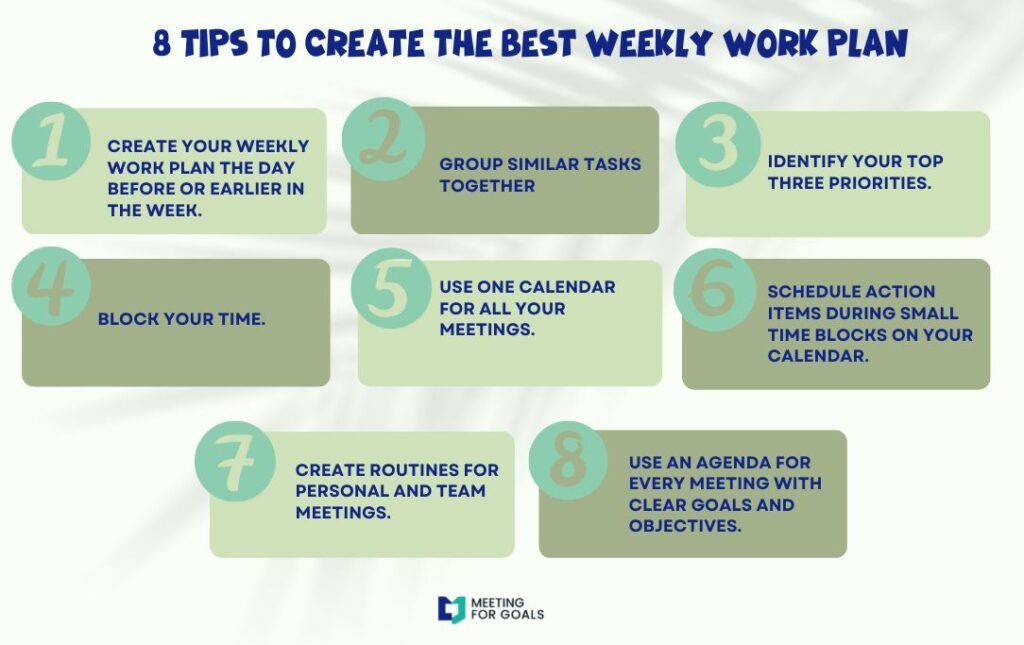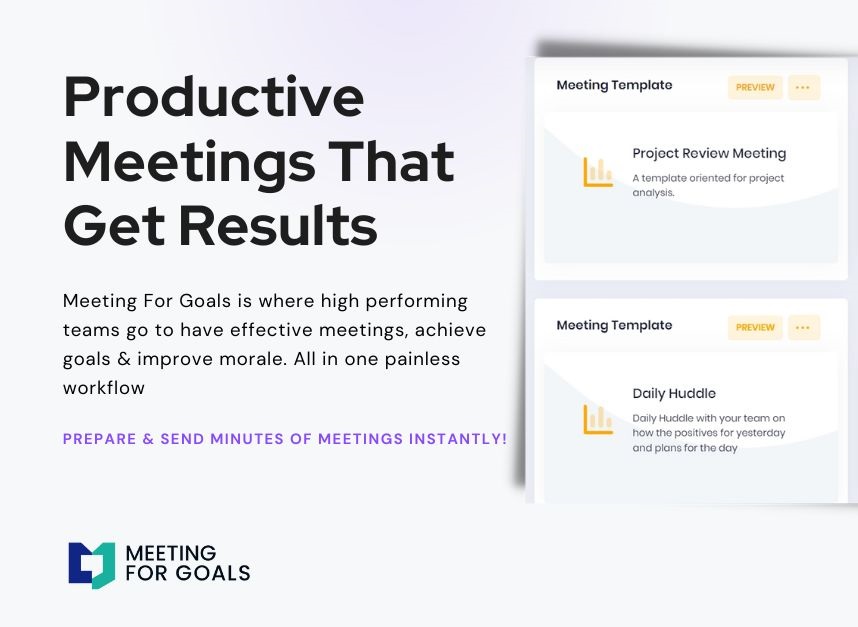How to Write Minutes: A Complete Guide to Productive Meeting Documentation
Meeting minutes are more than just notes. They’re the blueprint for action, accountability, and alignment. In fast-paced organizations, especially those with 40–70 employees, high-level executives rely on accurate, actionable minutes. These ensure that meetings drive results. Whether you are a Director, VP, or C-suite executive, knowing how to write effective meeting minutes can transform your team’s productivity. In this comprehensive guide, we’ll walk you through the purpose, preparation, structure, and best practices for writing minutes that matter. We’ll also show how Meeting For Goals can help streamline the process.
I. Introduction
Meetings are where decisions happen, strategies align, and progress gets tracked. But without proper documentation, even the most insightful discussions can be forgotten or misunderstood. That’s where meeting minutes come in.
Meeting minutes are the official written record of what happened during a meeting. They capture key points, decisions, next steps, and who’s responsible for what. When done right, they help teams stay accountable, aligned, and focused on results.
For growing teams, especially in companies with 40 to 70 employees, the stakes are high. A missed action item or unclear takeaway can delay projects or create confusion. That’s why executives need a clear and consistent process for documenting meetings.
At Meeting For Goals, we’ve built a platform that helps your team run smarter meetings. From setting agendas to tracking action items, our software ensures your meeting minutes become a strategic asset — not just a to-do list.
If you’re ready to level up your meeting documentation, you’re in the right place. In this guide, you’ll learn how to write minutes that drive performance. Whether you’re new to the process or looking to improve, we’ll walk you through everything step by step.
👉 Ready to get started? Sign up for Meeting For Goals today and start transforming your meetings: https://app.meetingforgoals.com/TenantRegistration/Register
2 Minute Video
Watch a 2 minute demo of our meeting management software in action
II. Understanding the Purpose of Meeting Minutes
Before we dive into how to write meeting minutes, let’s talk about why they matter.
A. What Are Meeting Minutes?
Meeting minutes are a written summary of what happened during a meeting. They usually include:
- The date and time of the meeting
- Who attended and who was absent
- What was discussed
- Decisions made
- Action items and who’s responsible for them
In many companies, minutes are considered official records. They’re even used in audits, legal reviews, and performance evaluations.
B. Why Good Minutes Matter
Well-written meeting minutes offer several key benefits:
- Record Keeping: They serve as a historical log of decisions and conversations. This is helpful when teams need to revisit why a decision was made.
- Accountability: Minutes make it clear who’s responsible for what. This helps ensure that tasks actually get done.
- Reference: Missed the meeting? No problem. Minutes help absent team members catch up quickly.
- Continuity: When someone leaves the team, minutes provide context for new members to get up to speed.
C. How Minutes Drive Team Alignment
In goal-focused companies, alignment is everything. Meeting minutes help make sure everyone is on the same page.
Picture this:
- A VP of Marketing uses minutes to confirm that the product and sales teams are aligned on a launch date.
- A Director of Operations checks if last week’s action items were completed.
- The CEO reviews minutes to track progress on strategic initiatives.
Meeting For Goals makes this even easier. Our software links action items directly to your meeting notes and goals, so everyone knows what’s happening — and what’s next.
Want to streamline your meetings even more? Check out our free meeting templates: https://meetingforgoals.com/meeting_templates
Adding an Agenda
How to add an agenda instantly on Meeting For Goals
III. Preparing to Write Minutes
Writing great minutes starts before the meeting even begins. A little prep goes a long way.
A. Know the Agenda and the Attendees
Start by reviewing the meeting agenda. This helps you anticipate what to document. Pay attention to:
- Key topics and goals
- Expected decisions
- Who’s attending and their roles
Understanding who’s in the room helps you assign comments and action items correctly.
B. Pick the Right Format
Not every meeting needs the same level of detail. Choose a format that fits:
- Formal Minutes: Great for board meetings or executive reviews. These are detailed and follow a structured format.
- Informal Minutes: Ideal for team check-ins or brainstorming sessions. These focus on action items and decisions.
Meeting For Goals offers customizable templates for both formats, so you can keep things consistent across your organization.
C. Gather Your Tools
Having the right tools makes minute-taking faster and easier. Here’s what you’ll need:
- A template or outline
- A laptop or tablet for faster typing
- Recording device (if permitted), to double-check complex discussions
Using Meeting For Goals? You can take notes right inside the platform and link them to agenda items and tasks — no extra tools required.
IV. Key Elements to Include in Meeting Minutes
Now let’s break down what goes into a solid set of meeting minutes.
A. Basic Information
Start with the essentials:
- Date and time of the meeting
- Location or video link
- List of attendees and absentees
- Name of the person taking minutes
This info gives context and makes the minutes easy to track later.
B. Agenda Items and Discussions
Go through each agenda item one by one. For each topic, include:
- A short summary of what was discussed
- Key points or concerns raised
- Any important data or documents mentioned
Don’t try to write down everything word-for-word. Focus on the highlights and decisions.
C. Decisions, Action Items, and Responsibilities
This is the heart of your minutes. Be clear about:
- What decisions were made
- What needs to happen next
- Who’s responsible for each task
- When it’s due
Use bullet points for clarity. For example:
- Approve Q3 Marketing Plan – Assigned to VP of Marketing – Due by June 30
- Finalize client onboarding process – Assigned to Operations Manager – Due by July 10
With Meeting For Goals, these tasks are automatically tracked and assigned in the platform — no follow-up emails needed.
D. Next Meeting Details
Always end your minutes with the date and time of the next meeting. This helps everyone stay on schedule and plan ahead.
V. Best Practices for Writing and Distributing Minutes
Even the best notes won’t help if they’re unclear or sent out too late. Here’s how to make your minutes count.
A. Tips for Taking Notes During the Meeting
- Use bullet points or shorthand to move quickly
- Focus on outcomes, not every word
- Highlight action items as they come up
- Use your agenda as a guide
If you’re using Meeting For Goals, you can take notes directly in the app and connect them to goals and tasks in real time.
B. How to Summarize Effectively
- Keep it objective and concise
- Avoid personal opinions or side comments
- Use consistent formatting
- Review your notes before finalizing
Busy executives don’t have time to read a novel. Keep it short and to the point.
C. When to Send the Minutes
Timing matters. Aim to send out your minutes within 24 hours of the meeting. This ensures:
- Tasks are fresh in everyone’s mind
- Responsibilities are clear
- Momentum isn’t lost
Meeting For Goals handles this automatically. Once your minutes are finalized, they’re sent to all participants instantly.
D. Double-Check Before Sending
Before you hit “send,” make sure:
- Names and roles are correct
- Tasks and deadlines are accurate
- There are no spelling or grammar mistakes
- The document is easy to read
If possible, have a colleague review the minutes. A second set of eyes can catch mistakes and improve clarity.
VI. Common Pitfalls to Avoid
Even experienced note-takers can make mistakes. Here are a few things to watch out for:
- Being Too Vague: Avoid phrases like “discussed project timelines.” Be specific: “Agreed to launch beta version by August 1.”
- Missing Action Items: Always note what needs to happen next — and who’s doing it.
- Delayed Distribution: Waiting too long to send minutes makes them less useful. Send them within 24 hours.
- Overloading with Details: Don’t try to capture every word. Focus on decisions, tasks, and key points.
- Inconsistent Format: Using different styles for each meeting creates confusion. Use a consistent template every time.
Looking for a ready-to-use format? Try our free templates here: https://meetingforgoals.com/meeting_templates
VII. How Meeting For Goals Simplifies the Process
Writing and tracking meeting minutes doesn’t have to be a chore. With Meeting For Goals, you get:
- Pre-built templates for all meeting types
- Integrated agendas and note-taking
- Automatic task assignment and tracking
- Instant distribution to attendees
- A central dashboard to monitor progress
Everything is in one place — no more juggling documents, emails, or spreadsheets.
Want to see it in action? Visit https://meetingforgoals.com and request a live demo.
VIII. Real-World Use Case
Let’s say you’re the Director of Product at a mid-sized tech company. You hold weekly cross-functional meetings with engineering, marketing, and customer success.
Without clear minutes, it’s easy for action items to fall through the cracks. But with Meeting For Goals:
- You create a shared agenda before the meeting
- Take notes directly in the platform
- Assign tasks on the spot
- Distribute minutes automatically
- Track progress in your dashboard
By the next meeting, you know exactly what’s been done — and what’s still pending.
IX. Conclusion
Writing effective meeting minutes isn’t just about documentation — it’s about driving results. For executives and team leads, well-crafted minutes mean better accountability, faster execution, and stronger alignment.
Let’s recap what we’ve covered:
- What meeting minutes are and why they matter
- How to prepare before the meeting
- What to include for maximum impact
- Best practices for writing and sharing minutes
- How to avoid common pitfalls
- How Meeting For Goals makes the whole process easier
If you’re ready to make your meetings more productive — and your minutes more powerful — it’s time to take action.
👉 Sign up now and start using Meeting For Goals today: https://app.meetingforgoals.com/TenantRegistration/Register
Because when meetings are managed well, goals get achieved.
Interested in learning more about how Meeting For Goals can help your team? Visit https://meetingforgoals.com and request a demo today.




